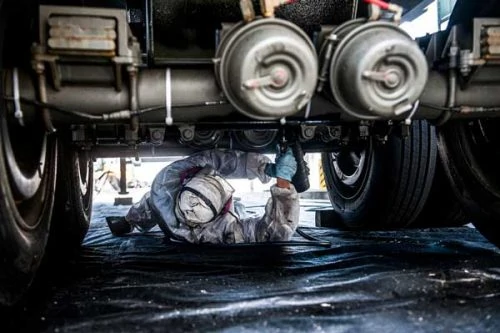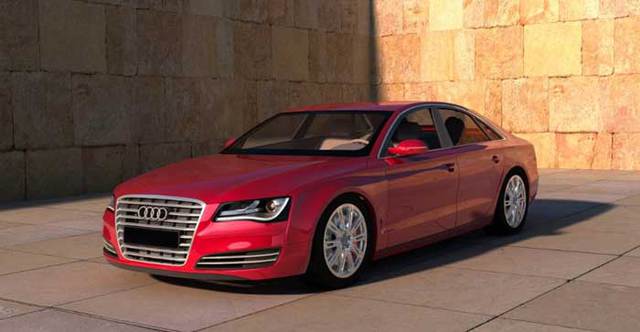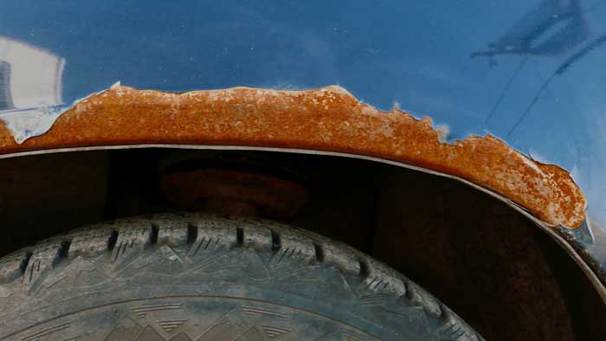Undercoat your car with the right steps, techniques and where to get your products and what to get.
Protect the underbelly of your car, don’t let the mechanical parts die on you before the body does. That and much more coming up in the following sections of this article.
Spare a couple of minutes to see through what I’m about to share with you and learn how to do a proper undercoat of your car.
Before I go to the techniques, there are a few things that you need to keep in mind. The difference in techniques depends on the condition of your vehicle.
Related Read : Best Undercoating for Trucks
Does Your Car Need Undercoating?
If you have just bought a new car and didn’t pay the car dealer for additional protective undercoating, you my friend, have made the correct choice.
You see, newer cars are coming out and most of them if not all of them are manufactured with corrosion protection material. And, that’s why it is unnecessary to add any sort of protective undercoating.
You can also skip several other expensive add-on services like VIN etching, fabric protection, and extended warranties.
New cars no longer need aftermarket rustproofing. However, that’s not the case with older models.
Older cars have a lot more iron/steel body parts. When oxygenated air mix with water, rust occurs. Basic science. Rust is like the rash; it will spread like one and ultimately shorten the life of your vehicle.
You’ll also lose resell value of your car if any of the body parts have visible rust on them. Another reason for corrosion is when moisture and dirt accumulate under the car’s body.
Why Do Cars Need Undercoating?Â
Rust never sleeps and there is a lot of things you can do to keep it at bay. To protect the undercarriage of your car from rust and other gunk that can form, you need to apply rustproof undercoating.
If you have a car model that was manufactured before 2006, you are out of luck. You need some sort of protection from rust.
After 2006, most of the car manufacturers have been making automotive parts out of galvanized steel. This material greatly reduces the risk of rusting and that’s why most modern cars don’t need any sort of undercoating.
Galvanized steel has zinc coating on it which doesn’t react to oxygen as iron does. That’s why this steel is better protected against rust. Even the body parts of a car are galvanized.
That doesn’t mean that newer cars are invincible against rust. But, there is no need for any aftermarket rust protection service. The manufacturers already made the necessary steps to protect your car from corrosion.
All you need to do is keep the underneath of your car free from dirt and debris. You can do things like regularly washing your car, oil coating etc.
Well, it’s about time that I stop talking about new cars and focus on older models. If you live in a rust belt region which is arguably the worst environments for causing vehicles to rot.
To prolong your cars lifetime, you need to treat rust completely by neutralizing it with chemicals to completely remove rust from the undercarriage.
Cost
The best way to keep your car from rusting is to go to a reputable service provider and do that. Don’t expect to pay for all the materials which you will only use once in a decade.
It suits a company to do that kind of stuff, but not for an individual. So, how much does it cost to rust proof your car?
To get an oil-based rust protection service applied to your car, the typical cost is between $100 and $150 per year. I know it’s expensive but oil coating the most efficient way to undercoat your car.
They say prevention is better than cure. And, that’s why the following section will discuss rust prevention before you apply to undercoat.
How to Prevent Rust?
Most of the time rust will occur on your wheel wells and bumpers. These are the most common places for rust to develop. It’s also the most troublesome spot to clean. Wheel wells are always dirty and difficult to see as well.
Most of the time, rust goes unnoticed and over time it spreads like a rash. It’s also the place most car owners neglect to inspect. After driving thousands of miles on the road, and if you happen to live in a rust belt region, it will certainly take its toll.
All car manufacturers will recommend you to rotate your car tires every 10,000 km. Use a flashlight to check the wheel well when you rotate those tires.
Use a flashlight to inspect for rust in the well and other inner parts of the car. If there is too much dirt, use a hose to wash the wheel well and inspect the area.
Also, don’t forget to check the bumpers. Metal bumpers are prone to corrosion. Another common place for rust is where the body components meet. Most likely the place where two metal pieces will meet or rub with each other.
If you see paint bubble in your hood and trunk, there is a good chance that rust may be developing beneath those bubble paint.
If you live in an area where there are snow and salt, the underside of your car will be at risk. Always check the undercarriage of your car for rust.
With that being said, what happens when you actually have rust?
Let’s dig down to that.
How to Undercoat Your Car?
Although it’s better to leave this to auto repair shop guys. But, if you want to do it yourself, be my guest. Here is how to do spray undercoating at your garage.
1. The first step of undercoating your car is to clean the surface. If you have been driving your car in the winter without giving the underside of your car a proper wash, use a power washer along with a 90-degree angle and give the car a nice clean wash and blow off any loose debris and dirt.
2. Use a proper jack stand and lift the car. Make sure to double check the stand before you get under there. Be sure to put a drop cloth under the car in case of any accidental oil drips.
3. Once you lift the car, remove the wheels to avoid over-spray and to get full access to the wheel wells. Dry the under-body of the car with a terry towel, compressed air, and a few fans to ensure the area has no moisture remaining.
4. While drying, you should inspect the area for rust on sensitive electrical connectors, exhaust or other areas that get hot. They can be wired brush or taped off before applying any sort of coating.
5. Tape off any electrical areas to avoid covering the connectors with undercoating. It will be tough to remove or replace parts if need to be in the future. The goal of the coating is to cover the metal frame and chassis.
6. The initial step is widely considered the most important step for any paint job. It will also affect the end result. That’s why it’s important to brush off any heavy oxidation and old flaking paint to ensure a solid bond with the coating. Take your time and wear safety glasses.
7. If you have a rusty undercarriage, I would suggest using a rust primer to coat the oxidized surface prior to undercoating. Use a sprayer and spray a light coat so that it will dry fast.
8. Now, it’s time for the rubberized undercoating. A gallon of Rust-Oleum undercoating cost about 20 to 25 dollars, but the primer costs a bit more. Use a larger front-end sprayer to accommodate the thicker viscosity of the primer.
9. Slow your arms down when spraying thicker liquids. Whether you are using a spray can or an electric sprayer, you want to stay about six to eight inches away. Use about 50% overlapping motions and do one full coat, let it dry and then add the second one.
10. After you are done with your first coat, let it dry for half an hour and apply the final coat. Make sure you read the product label for dry times as it’ll be different for each liquid.
It’s a simple process. But if you live in a place where there are snow, salt, and other chemicals, this process is not good enough.
You need to apply “Oil Undercoating†all fittings, lines, bolts and general body metal parts. It’s an old-school method and highly effective.
Oil gets into the nooks and crannies where rust starts where the rubberized one can’t get. It’s perfect for old vehicles and will cost way less.
Since a lot of new fellas out there don’t like to use this one, I skipped the whole process and showed the new way of doing so.
In a nutshell, it’s better to leave it to the auto repair guys if you want to get a professional service done. However, you can do the small regular cleanup and coating at home with ease by following these steps.
Hopefully, now you know how to undercoat your car and will be able to do it next time on your own and save a few bucks.

Myself Erick R. Jackson, I am a Computer Science graduate by law but a passionately enchanted blogger by profession.
A few years back, it all started with my first blog website. It was about to deal and heal with automotive hand tools. Well, it brought me a good audience base for sure, which then dragged me out of my major and got me to sit and write, and be a blogger. Read more



